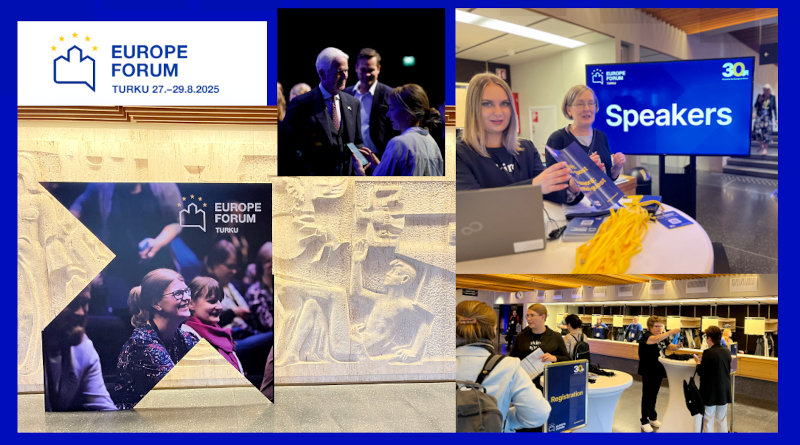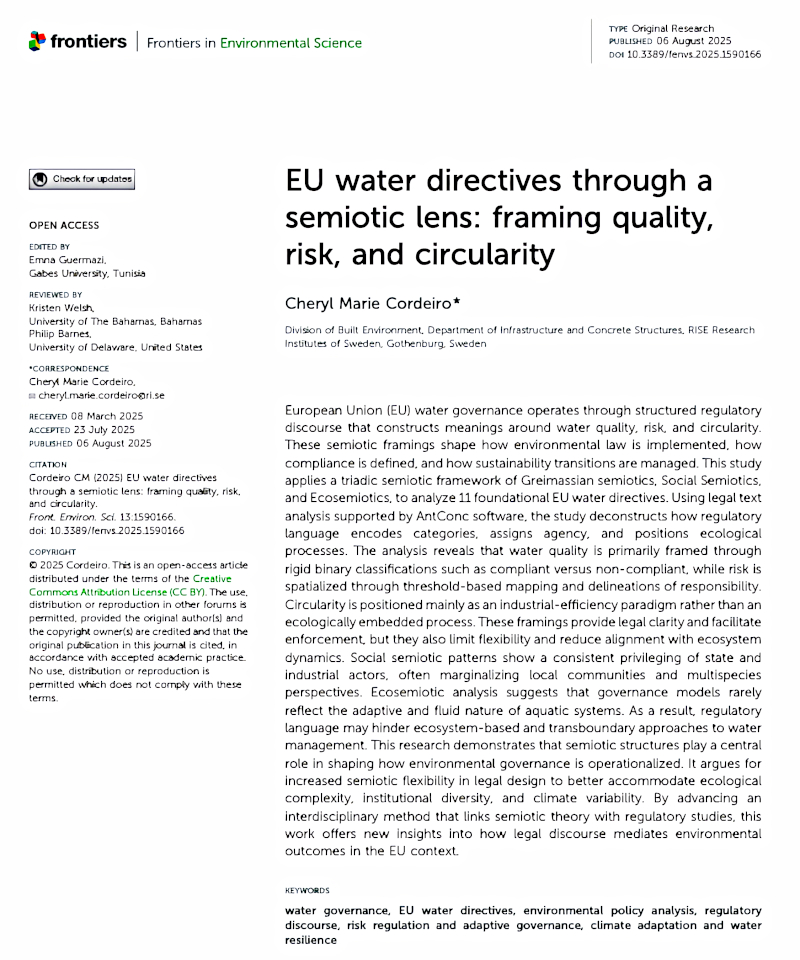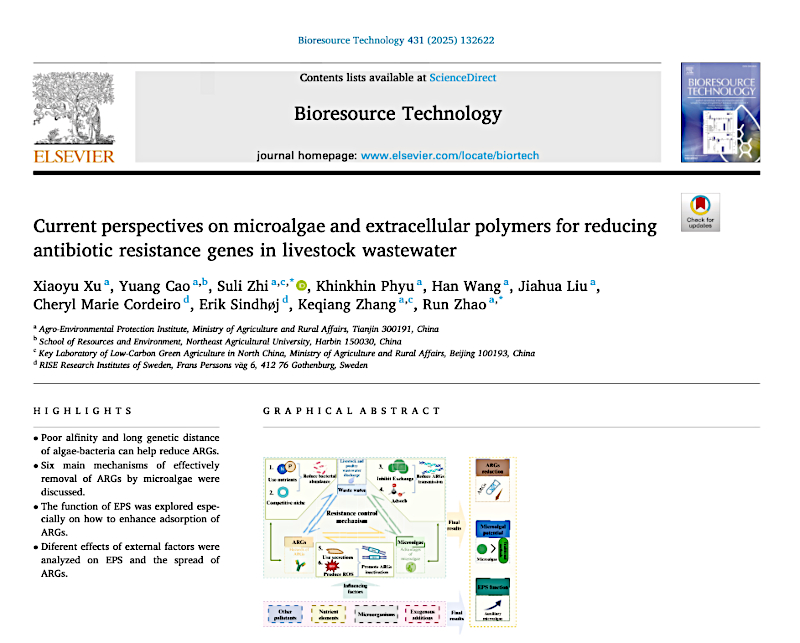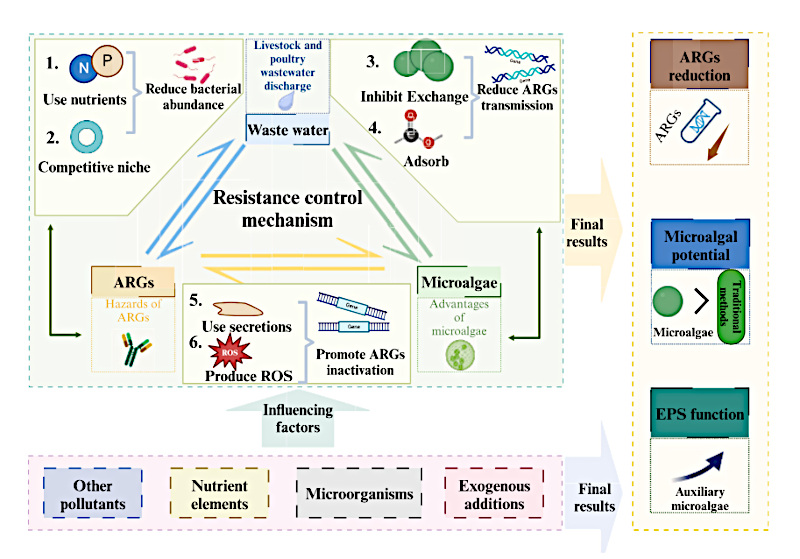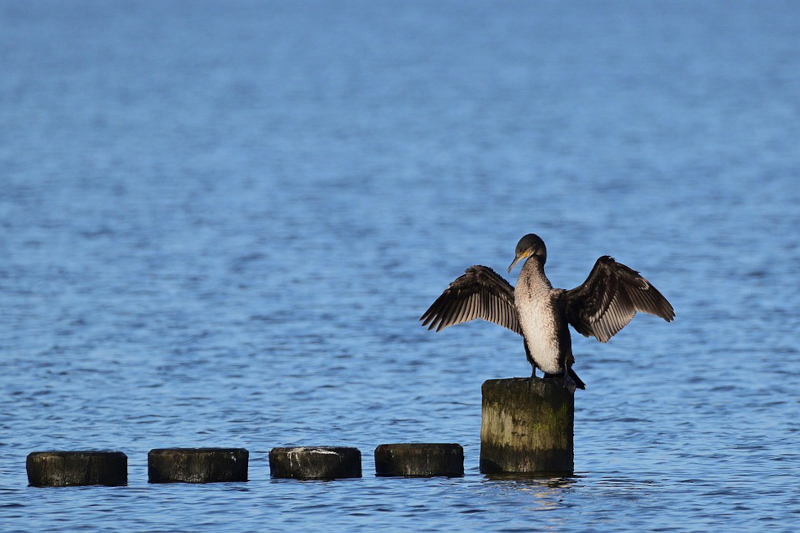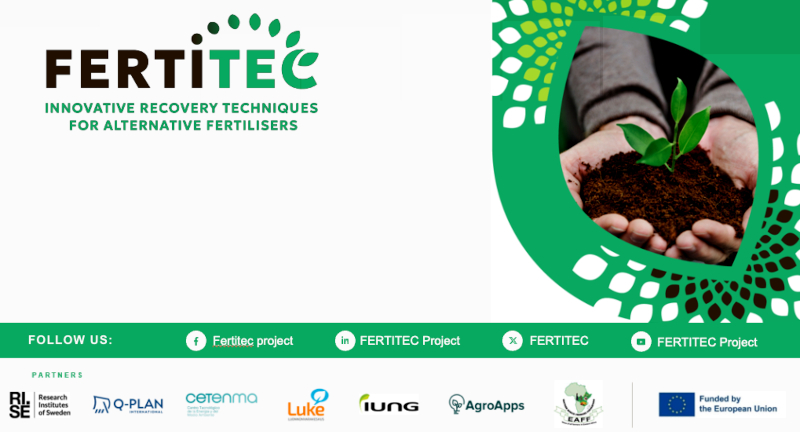
Our new study, now published in the Journal of Hazardous Materials, reveals promising insights into using microalgae to tackle one of agriculture’s most pressing environmental challenges: the spread of antibiotic resistance genes (ARGs) in livestock wastewater.
The Challenge
Nearly 55% of antibiotics used in China are applied in livestock farming, creating a major pathway for antibiotic resistance genes to enter the environment through farm wastewater. These genes pose serious risks to ecosystems and human health, making their removal from wastewater a critical priority. Similar risks are emerging in aquaculture, where high-nutrient effluents containing antibiotic residues and resistance genes threaten surrounding waters, highlighting the need for robust, nature-based treatment solutions across both terrestrial and aquatic production systems.
An Innovative Approach
Our international research team, including collaborators from RISE Research Institutes of Sweden and China’s Agro-Environmental Protection Institute (AEPI) under China´s Ministry of Agriculture and Rural Affairs (MARA), investigated how the microalga Chlorella pyrenoidosa responds to environmental stressors while treating dairy farm wastewater. Specifically, we examined the combined effects of lead stress and gibberellin (a plant hormone) stimulation on microalgal performance, bacterial communities, and ARG removal.
Continue reading ”How Microalgae Combat Antibiotic Resistance in Wastewater”





